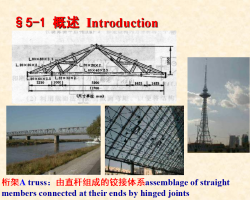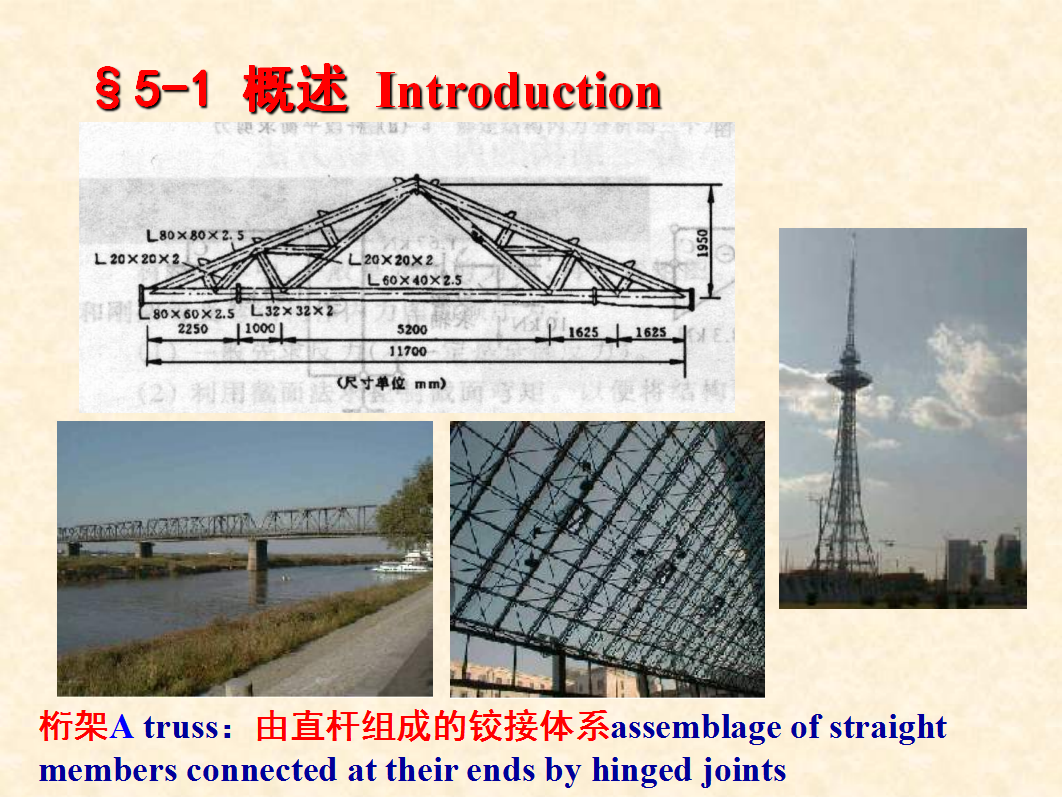���A truss����ֱ�U�M�ɵ��q���wϵassemblage of straight members connected at their ends by hinged joints
�������O(sh��):Basic assumptions
1�����Y(ji��)�c(di��n)�������q��all hinges are frictionless
2�����U�S����ֱ��,�������q(li��n)�Y(ji��)�ėU�����q����The centroidal axes are straight lines,those meeting at a hinge all intersect at the centre of hinge.
3�����dֻ�����ڽY(ji��)�c(di��n)�ϡ�All loads are applied on truss only at its joints.
��(d��o)�����ԣ����U������ֻ���S�����������]�Џ��غͼ������@�ӵėU�Q������U��All members are subjected only to
axial forces, but not subjected to bending moments and shear forces, these members are called two-force members.
��ܽY(ji��)��(g��u)�ķ��Classification of trusses��
һ��ƽ�棨���S����ܣ�plane trusses��
���нM����ܵėU���Լ����d�����þ�����ͬһƽ���(n��i).
All the members and the applied loads lie in the a single plane.
���������ͷ��Classification according to their forms
ƽ�������
Parallel chord trusses
2. ���������Triangular trusses
3. ���タ��ܣ��۾���ܣ�Parabolic trusses
4. �������Trapezoidal trusses












